We can draw important lessons from the way deadly Corona virus is being handled in various countries successfully, especially in China, with the help of various new technologies.
The outbreak of Covid-19 has become a global emergency of 2020. So, various preventive measures are being taken to control the infection. The outbreak first started at the Wuhan city of China before it spread across the country. In China, doctors tried their best to cure the patients but most of the medications failed, and the death toll increased dramatically.
The outbreak caused such an emergency that a new hospital named Huoshenshan Hospital was built within ten days at Wuhan. Controlling such a deadly outbreak is a very challenging task, but people of China took various comprehensive measures with the help of artificial intelligence (AI) to control the outbreak.
Online medical assistance
In China, cloud-based online consultation websites and apps helped the people deal with the outbreak. Doing online consultation from home, instead of going to the hospital, helped control the transmission of the virus in public places and hospitals. Such cloud-based online consultation services with AI algorithms can identify seriously ill patients and manage patients intelligently.
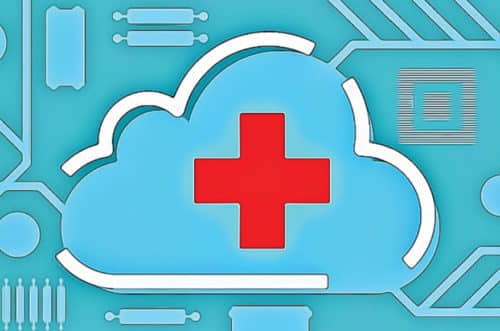
Many hospitals in China offer online medical consultation and video chat facility with doctors to consult for any medical problem. During the outbreak, infected patients were able to consult the doctors directly from their homes. They could also take advice from the doctors using various websites and apps.
Many apps like Jingdong and Wei Yi provide online medical consultation services to the patients in China, and these work through cloud-based AI systems. Five hospitals in east China’s Anhui Province started offering Internet-based diagnosis and treatment to the patients having fever on their official WeChat accounts from 24th January.
Hospital of Anhui Medical University and many others are treating patients online. Using such AI-based online medical consultation services is helping many patients in getting medical support at home. Self-quarantine has helped minimise the outbreak of this disease in China to a great extent.
Medical service robots
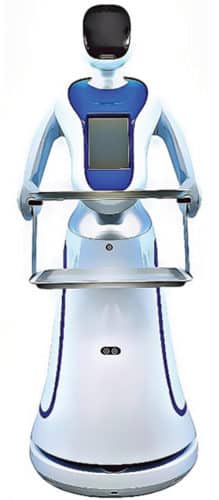
Apart from online medical services, hospitals in China at Guangdong province are using service robots to deliver medicines and communicate with the infected patients. Using robots instead of nurses or attendants to communicate with an infected patient reduces the chance of cross-contamination and transmission of disease to others. This helps in keeping the nurses, doctors and others safe from getting any kind of infection. These service robots are made of non-corrosive material, which can be cleaned with disinfectants for sanitisation.
Companies like Orion Star have supplied many such service robots to various hospitals in China to deal with the coronavirus outbreak. The service robots are programmed with AI algorithms and can work almost like a human being. So, using such service robots can help the healthcare personnel to deal with infected patients safely, during any such deadly outbreak.
Thermal imaging system
In China, people are being screened using sophisticated temperature detection devices and thermal vision cameras, which are connected to AI systems, to detect infected people with fever in various public places such as airports. Such intelligent screening systems are able to control the outbreak of coronavirus infection efficiently. Such AI-driven fever detection systems can help in preventing seriously sick people from traveling in public transport, and simultaneously alert the paramedics about them.
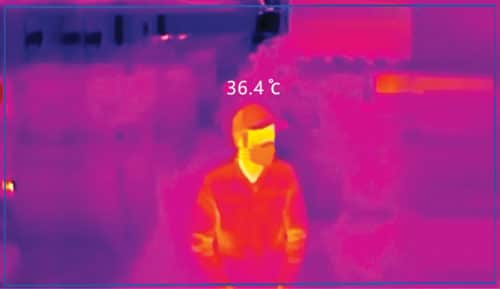
Outbreak prediction using AI
Supercomputers running on AI algorithms can help prevent outbreaks like the coronavirus and stop any pandemic before it happens. BlueDot, an automated infectious disease surveillance computer system created by a Canadian AI company, was able to predict coronavirus outbreak in Wuhan city long before it happened. BlueDot had sent early warnings about the outbreak and even predicted spread of the virus to other places like Bangkok, Seoul, Taipei, and Tokyo in the days following its initial appearance.
BlueDot uses machine learning and natural language processing techniques to prepare its model that sifts through news reports in 65 languages, airline ticketing data, and animal disease networks. With the help of AI algorithm, it then makes a meaningful prediction about any infectious outbreak.
Self-driven cars/autonomous vehicles
During the outbreak of coronavirus in Wuhan city, many people tried returning to their hometowns, mainly through flights. They tried hiring taxis and other public transport vehicles to reach airport, but many taxi drivers refused to provide service because of the fear of getting infected. If self-driven autonomous vehicles were available, everyone could get to the airports during the outbreak.
A self-driven car uses a variety of sensors like radar, lidar, sonar, GPS, odometry and inertial measurement units, along with AI algorithms, to drive from one place to another autonomously. A company called Waymo, initially led by Google, has successfully tested their self-driven cars and is planning to manufacture Waymo Level 4 autonomous vehicles very soon. Uber is also interested in providing self-driven taxi service and might use such self-driven cars for this purpose in the near future.
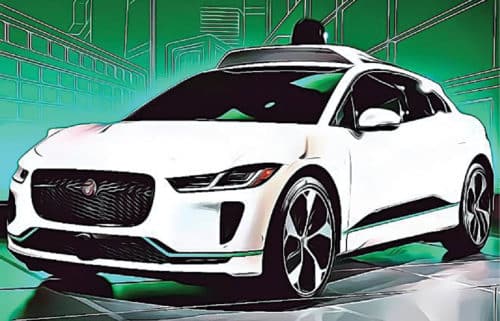
Delivery drones
When we think of drones, the first thing that comes to our mind is high-altitude video recording/streaming. Because that’s what most people are doing with drones at present—to capture stunning videos for their Vlog. But drones can do more than that, and in many places drones are being used to deliver food and pharmaceutical products also.
A company called Flirtey uses drones to deliver water bottles, food and medicines to rural areas in the United States. Flirtey is the first delivery drone company in the world that has been approved by the Federal Aviation Administration to provide delivery service using drones. Another company called Zipline International uses drones to deliver pharmaceutical products to various parts of Rwanda in Central Africa.
Amazon, the e-commerce tech giant, is also planning to use drones for the delivery of its online orders; the service will be called Amazon Prime Air. Such delivery drones use GPS navigation and AI algorithms to fly from one location to another.
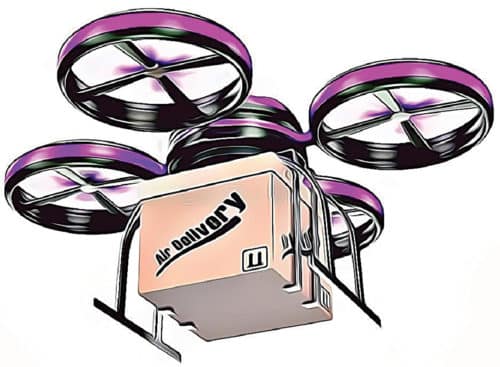
During the coronavirus outbreak in China, people faced a lot of difficulty in buying food and medicines, because most stores remained closed. Using drones to deliver food and medicines during an outbreak can help the people to survive such hardships.
During outbreak of coronavirus infection, the companies who used AI for their products and services were able to help the people of China. This proved that improving the infrastructure by using AI for various products and services can help improve our life, besides controlling or preventing diseases.
Debojit Acharjee is a software engineer and a writer










